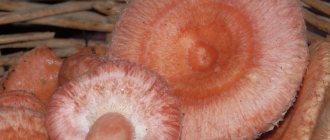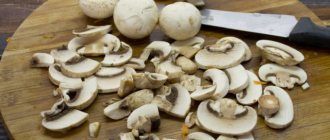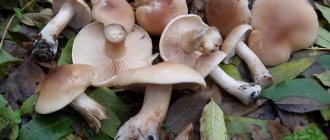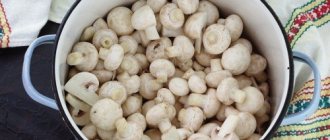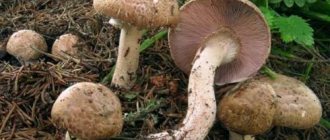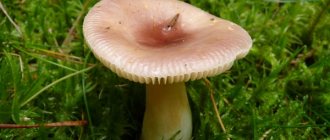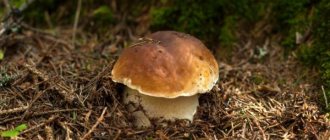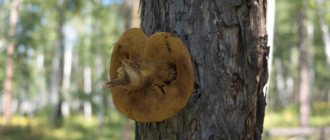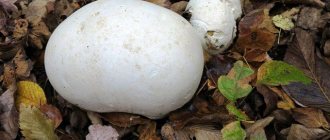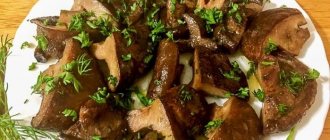Preface
What do sandpaper, a knife, a sponge and a plastic baseboard have in common? All these items can be used to make a professional tool for cleaning a variety of mushrooms. How to clean champignons quickly and easily, and what available tools are useful for this, you will learn in a few minutes in this article!
TOOLS NEEDED
Water Pan with lid Sandpaper Knife Basin Forest champignon Common champignon Field champignon
Expand
Anyone who has ever dealt with small mushrooms has thought about the advisability of removing a thick layer of skin from the hat. On the one hand, there may be pieces of leaves, dust or harmful organisms, but on the other hand, it is a pity to lose a lot of nutritious product, because the specimens are already too small. In fact, it is not at all necessary to clean with a knife, but this procedure cannot be neglected either. An alternative option is a washcloth. Yes, that’s it – we will wash the mushrooms, and with hot water, to kill all microorganisms.
A champignon 4-5 centimeters high grows in nature in just 2 days. Thus, all the dirt, soil residues and leaves do not have time to penetrate even 1-2 mm inside its body and remain on top. Wiping with a washcloth will remove all dirt. If you want to play it safe, heat the water to 60 degrees - it kills all pathogenic bacteria (the procedure is useless if you continue to carry out heat treatment - frying, boiling, etc.). Let's take a closer look at the cleaning process.
Step 1
Primary processing.
If you bought mushrooms in greenhouses, then it is not required, but if you collected them in plantings, you need to clear them of large debris. These could be branches, leaves, mosses, etc. that could cling to your future dish while you were removing it from the ground. Simply throw all the mushrooms into a large bowl, add water, stir well and pull out for further processing.
Step 2
We clean the “legs”.
Since they are very small (sometimes they barely show up from the hat), this procedure can be neglected. It will be enough to simply cut off a few minimeters of the stem, on which there may be soil or mycelium.
Step 3
We wash our hats.
Small forest mushrooms can be wiped off very well with a damp cloth, or even better with a washcloth. It’s enough just to take it and run it over the surface several times – all the young skin will immediately be erased. Even if there are dark areas left on them, it’s not scary. These are no longer dirt, but simply places damaged by sunlight. They are especially noticeable in champignons that have leaves on their caps.
Pro tip: if you want the soil and all dirt to be washed away much better, soak for 20-30 minutes in hot water. Only then will you be able to remove all contaminants from your mushrooms in a few seconds.
If their size is more than 4-5 centimeters, you can use coarse sandpaper - it removes the skin perfectly. The only drawback of this process is the need to constantly rinse the paper in water, since after each mushroom it will become clogged. For convenience, it would be better to take a piece of 10x10 cm.
Cleaning large champignons
The productivity of cleaning large specimens is much higher. You don’t have to wash or wipe them at all – this is one of the advantages. It is enough to take a small knife with a blade up to 10 centimeters long and you can already begin the process. Suitable for both greenhouse and wild mushrooms.
Step 1
We work with the legs.
The first step is to remove 1-2 centimeters of the stem, especially if the product has been lying outside for a long time. Then, with progressive movements from the hat downwards, we remove a few millimeters of skin with a knife.
As a big fan of mushrooms and quiet mushroom hunting, I can say with confidence that the safest mushrooms are sold in stores. And the best representatives among all this diversity are champignons.
Champignons are available all year round, tasty, aromatic and healthy. This product is the basis of many wonderful dishes. Salads, soups, roasts, pies, pizza and much more - there are a lot of recipes. But, like any other mushrooms, they need pre-processing. Let's figure out whether and how to clean champignons before cooking, why do it at all, where and how much to store, how to choose the right one.
Stuffed champignons - mushrooms, herbs, garlic, eggs, cheese and bread crumbs
Please note that the recipe is for 1.5 kg of champignons. This is an excellent appetizer, so you may want to prepare a lot of stuffed champignons . If you are preparing 400 g of mushrooms, use 40 g of herbs, 1-2 cloves of garlic, 1 egg, 20-30 aged hard cheese and some bread crumbs or panko breadcrumbs. These champignons are great to cook with four hands. While one person fills them with the prepared filling, the other fries them. This makes it fast and fun.
Champignons stuffed with herbs, cheese and eggs
Let's move on to more satisfying dishes. Let's start with the hot one. It will take 400 g of medium champignons and the legs left over from preparing the previous dish.
Choosing the right one
Good mushrooms should be dense, light, with a white or milky cap without spots, mold or rot. Slightly dried out ones with brownish spots can also be purchased, but their taste and smell will not be as bright. There is a variety of these mushrooms with a brown cap.
When choosing, you should also consider the cooking method. Any size is suitable for frying, even not the very first freshness. For salads, pizza, that is, for dishes where mushrooms should not only be tasty, but also beautiful, it is better to buy small specimens.
Do not eat:
- if the mushrooms are moldy;
- if there are soft slippery places on the cap or stem.
Such mushrooms are most likely affected by microorganisms, the results of which are toxic and hazardous to health.
The use of champignons in cooking
In cooking, champignons are used most abundantly: they are stewed, boiled, baked, steamed, and so on. It's hard to find a savory recipe that doesn't include mushrooms. Champignons go well with pasta, potatoes, rice, meat, vegetables. That's why we created this site so that you can find your favorite mushroom recipe. A huge number of methods for preparing this ingredient have already been laid out, and this is just the beginning. Therefore, click on the site icon in the upper left corner to go to the main menu and get acquainted with the best champignon recipes.
Does it need to be cleaned?
In any case, there should be minimal processing before cooking - there is always at least minor contamination. This applies even to purchased ones that are grown artificially. Still, the conditions were not sterile, and they lay on the counter for some time.
Forest champignons or those collected in the fields, especially need cleaning - no one likes sand, particles of earth and leaves in food.
When thinking about whether champignons are cleaned, almost every housewife implies a process in which the top skin is removed from the cap and the “skirt” is peeled off from the stem. Champignons need to be subjected to such thorough cleaning in very rare cases - when they are too large or have been lying around for a long time, or when the recipe does not require heat treatment. But more on that later. If we talk about edibility, then all parts are edible, so there is no need to remove them.
For some gourmet dishes in expensive restaurants, the rough skin must be removed from the champignons and the tough stem must be removed. This way the most tender parts of the mushroom are used.
Cleaning small mushrooms
The easiest way to clean small mushrooms from the store. For this mushroom to grow to 3-4 cm in favorable conditions, it only takes 2 days. During this time, no dirt or dangerous microorganisms have time to penetrate inside the fruiting body. Therefore, small mushrooms are cleaned like this:
- wipe the hat with a damp cloth;
- cut off 1-2 mm of the legs;
- rinse quickly under running water;
- dry on a towel and you can start cooking.
Cleaning large champignons
Large specimens, as well as mushrooms that are not the first freshness, need to be cleaned a little differently. It is in this case that you should remove the skin from the cap. This is not difficult to do. Using a convenient sharp knife, pry up the bottom of the cap and remove the skin upwards. Then we scrape off the remains of the skirt from the leg and cut off the bottom.
Then rinse under cold water and dry. By the way, a few words about how to properly wash champignons. You can't keep them in water for a long time. Due to the specifics of its structure, the mushroom absorbs moisture very quickly, while losing the richness of taste and aroma.
What about forest specimens?
For some reason, many people believe that the forest brothers need some kind of special cleaning. This is not so - the scheme is the same as for purchased ones. If there is a lot of sand and other debris, then you should simply rinse them more thoroughly.
I will share a way to clean champignons collected in rainy weather. Such mushrooms are very dirty both outside and inside, and it is incredibly difficult to remove everything by hand. Therefore, we rinse them under running water, washing away large debris. Then we put it in a large container and fill it with boiling water. They stand under the lid until they cool to room temperature. Now we wash the mushrooms well in cold water - all the dirt comes off easily. Of course, the taste and aroma of these champignons will not be as bright, but sand will not end up in the finished dish. This method is suitable for any agaric mushrooms.
Interesting recipes:
Can it be eaten raw?
Indeed, these are the mushrooms that can be eaten raw. But in this case, you should know how to process champignons.
Be sure to clean off the entire outer layer from both the cap and the stem. This applies to even the freshest and smallest ones. Also, the stem of champignons is cut off, but not all of it, but 4-5 mm.
After this, rinse the mushrooms with hot water. At a temperature of 60 degrees, many microorganisms die. In this case, the mushroom protein does not have time to coagulate. After such simple processing, raw champignons can be eaten.
It is better, of course, to keep them in some other marinade, which includes any acid - lemon juice, vinegar. This is how we reduce all risks to a minimum.
Recipe 12: Baked champignons with salmon
Tender, spicy, aromatic, royal fish with an equally delicious product - champignons. Amazing combination! Try it!
Ingredients : 3 salmon steaks, 300 gr. champignons, balsamic vinegar 2 tablespoons, bunch of dill, 2 l. lemon juice, zest from half a lemon, nutmeg, olive oil, salt and white pepper.
Cooking method:
1. Rinse the steaks, add salt, coat with vinegar (1 spoon). Sprinkle the fish with dill.
2. Sprinkle with zest, leaving a little zest. Sprinkle steaks with lemon juice (1 spoon).
3. Wash the champignons, cut them and pour over the remaining balsamic vinegar. Sprinkle with nuts, add salt to taste, pepper, sprinkle with remaining dill, zest, lemon juice and olive oil.
4. Leave the champignons and fish to marinate separately for an hour.
5. Next, cover the baking sheet with foil and grease it. Add salmon and mushrooms. Place in the oven, preheated to 200 degrees, and bake until done for about half an hour. The food is ready!
How to store
Let's look at the storage rules. Fresh champignons can be left in the refrigerator for a week, but only if they are well sealed in some container. A tightly tied plastic bag will also work. If there is no tightness, then the mushrooms begin to darken.
Is it possible to eat champignons if they have darkened in the refrigerator? Yes, you can, but only if there are no traces of rot or mold, and also if they were stored for no more than 7 days.
Keep peeled mushrooms in the refrigerator for a maximum of 2 days. You can sprinkle them with lemon juice and cover them with a lid - this way they will not darken. Immediately before cooking, cut off the stem of such mushrooms by 2-3 mm.
As you can see, you need to clean the champignons. But exactly how to do this depends on what delicious mushroom dish you decide to please yourself and your loved ones.
To summarize
Now you know about the benefits and harms of champignons, as well as the basic rules for eating dishes with this ingredient. In fact, if you cook fresh mushrooms correctly and tasty, the beneficial properties will completely dominate, while the negative qualities will practically not manifest themselves. Chitin causes the greatest harm to the human body, but it is produced in large quantities only a few days after the fungus detaches from the mycorrhiza.
Therefore, if you picked mushrooms in the morning or at lunch, and in the evening or the next morning you already cooked or pickled them, then you are definitely in no danger (provided that you carefully checked the champignons for the absence of worms and did not accidentally pick a non-edible mushroom). It is for this reason that you should always take an experienced mushroom picker with you on a mushroom picking trip in the forest, if you are not one. Write your questions regarding the topic of this article in the comments. Well, share your opinion on how exactly you like to cook champignons: stew, boil, steam, fry or bake. It will be very interesting to read. Bon appetit and see you soon!
Video
Watch a short and clear video about how easy it is to clean champignons.
You may also be interested in:
Before you start cooking champignons, we recommend peeling them. This procedure is optional, but we still recommend taking a little time to clean them. A huge amount of dirt accumulates on the thin skin, which will grate unpleasantly on your teeth. The spongy structure of mushrooms absorbs absolutely everything, so cleaning them will not be easy.
Despite the fact that you will have to spend a little time on the procedure, the result is worth it - you will get perfectly cleaned mushrooms without dirt and dust. Now you can add them to any dish!
How to properly clean champignons: tips and photos
Mushrooms grow close to the ground, which is why so much dirt accumulates on them. Today we will present you the easiest and fastest way to clean mushrooms at home. Thanks to our tips, your champignons will sparkle white and clean:
Rinse under running water.
To wash off excess, rinse each champignon as quickly as possible under running water. Don't over-soak them in it as they will absorb moisture very quickly and develop a slimy consistency.
Wipe with a napkin.
To quickly remove moisture, quickly wipe each mushroom with a paper towel. Gently wipe off any remaining dirt; if it is in a hard-to-reach place, fold the napkin and wipe with a corner.
Treat the surface of the mushrooms with a soft brush, this way you will remove as much dirt as possible.
The downside is that it will take a lot of time. Instead of a brush, you can use a dish sponge; it gently and quickly cleans the delicate surface of the champignons from dirt.
Cleaning.
Many people are interested in the question: is it necessary to wash off the skin from them? No, because it is quite thin and thanks to it the dish becomes even more flavorful. You only need to cut off the skin in places where there are spots or rotten areas. Look at the legs - if their ends are slightly dry, cut off these places with a knife.
For stuffing
. If you are going to cook stuffed mushrooms, you will also need to remove the inside of each cap, the so-called “gills”. This can be done using a teaspoon - this way you will gently remove the gills and not damage the cap itself. We advise you to choose fairly large champignons for stuffing, as they shrink in size when baked. Don't throw away the legs, chop them and add them to the filling.
Leave to dry.
To remove all moisture completely, place the mushrooms on the surface away from each other and leave for 30-40 minutes.
How to choose and store champignons correctly:
- Fresh mushrooms are quite firm to the touch, plump and without blemishes. Also pay attention to humidity - if there is mucus and water on their surface, they are not fresh.
- “Gills” - they are located on the inside of the cap. The gills should be tightly closed.
- You can store unwashed champignons in the refrigerator for up to two days, in a paper bag or plastic container. They need to breathe, so don't store them in a plastic bag.
Did you know that champignons can be eaten even unprocessed?
This product contains more fiber and vitamins than fried or stewed. Make sure to clean them well, cut them up and add them to your salad.
How to clean champignons: video
Be sure to peel them before using. Try to keep them interacting with water as little as possible and follow all the tips presented in the video.
Women's online magazine website
Champignons are one of the most beloved and popular mushrooms. They are included in a wide variety of dishes and are even eaten raw. The popularity of champignons is justified not only by their good taste, but also by their undoubted usefulness. They contain vitamins B, C and D, linoleic acid, sodium, phosphorus, potassium and amino acids. These mushrooms also contain easily digestible protein, so they are recommended for vegetarians to include in their diet. According to scientists, eating champignons can improve brain activity and memory, as well as reduce the risk of heart attack and atherosclerosis. But in order for all these beneficial qualities to be absorbed by the body, you need to know the rules for processing mushrooms, namely how to clean them, and whether this should be done at all with champignons. The answer to this will not be unambiguous, since it all depends on where these mushrooms came from in your kitchen. It’s one thing if you bought them in a supermarket (at the market), and quite another if you collected them in the forest with your own hands. Let's look at both cases and figure out whether it is necessary to clean store-bought champignons and what needs to be done with fresh wild mushrooms.
Do I need to clean fresh store-bought champignons?
When asked whether it is necessary to clean champignons, many housewives will answer that they do not clean them and do not understand why this is necessary at all. Someone will even argue that if you order a salad of fresh champignons in a restaurant, they will be served uncleaned. Yes, it is, but this does not mean that champignons can be used immediately as soon as they are taken from the counter. At the very least, the mushrooms should be wiped with a wet towel or napkin. Of course, such mushrooms were grown under artificial conditions, on a substrate, and there seemed to be nowhere for them to get dirty. But still, the conditions for growing champignons are not sterile, and cannot be so. And we certainly cannot know what fertilizers were used to stimulate growth. Therefore, it is better not to limit wiping the champignons with a damp cloth, but to rinse them under running water and blot them with a napkin. Since such mushrooms are small and young, they do not require any further processing.
Do I need to clean forest (garden) champignons?
Whether champignons collected with one’s own hands are cleaned is a question that probably doesn’t arise for many people – wild mushrooms certainly don’t look clean. But perhaps not everyone knows how to clean them correctly. Therefore, it makes sense to consider in detail how to prepare forest champignons for subsequent consumption.
If you picked small champignons, then there won’t be much work with them. It is enough to brush off the remaining stuck soil from the mushroom with a brush, rinse the champignons under running water and renew the cut at the stem with a sharp knife. Next, you can cut the mushrooms into pieces of the desired size, or it is better to leave them whole. The skin on the cap of young champignons is very tender and thin, so removing it is a thankless and pointless task.
If the champignons are not so small, 4-5 cm or more, then a more serious approach to cleaning them is required. Because their cap is covered with skin, which softens during heat treatment, not very well, which means it is better to remove it from the mushroom. But the first step, of course, is to clean the mushroom from dirt with a brush and rinse it under running water. Next, dry the mushrooms with a paper towel and begin peeling them. To do this, we pick it up from the edge of the cap with a sharp knife and carefully pull it towards the center of the mushroom. After peeling the cap, cut off the bottom of the stem. It should be borne in mind that storing mushrooms in the refrigerator does not have the best effect, and therefore the longer the champignons have been in the refrigerator, the larger part of the stem will need to be cut off. The skirt from the leg does not need to be removed, it is edible.
How to properly clean champignons.
Champignons are considered the easiest to prepare and safest mushrooms. It’s not for nothing that these unpretentious mushrooms began to be grown and cultivated. Even if you eat raw champignons, it is impossible to get poisoned by them.
What pre-treatment is necessary for these mushrooms and what processes of their preparation need to be studied in more detail? Read about this in the article.
At what age can it be given to children?
In this case, again it all comes down to the fact that mushrooms are difficult for the human digestive system. First of all, this is strongly influenced by chitin (more about this in the article above). In children, as everyone knows, the body is “built and improved,” including the digestive system. Therefore, it is not recommended to give champignons to children under 12 years of age, although many nutritionists allow giving mushrooms a little at a time from 7-10 years of age. I think nothing bad will happen if you cook champignons for your children little by little. But it is worth considering that the child may develop an allergy, so you should carefully monitor his condition after the first meal with mushrooms.
Do I need to wash champignons before cooking, frying and how?
- There are many controversial issues regarding the preparation of mushrooms. One of them is whether champignons need to be washed?
- Some people believe that washing a product that has been lying on the ground is simply necessary. Therefore, they must be soaked.
- Others are of the opinion that mushrooms quickly absorb excess water during washing, so it is better to do without this procedure. The only thing you need to do before cooking is to shake the mushrooms off the ground.
- But both options are not entirely correct. There is no need to soak the champignons, but you should not skip the washing step under running water.
- The washed mushrooms are immediately laid out on a towel so that all excess moisture is absorbed into the fabric. You can pat the mushrooms dry with a napkin instead. With this method of washing, the mushrooms will not have time to soften.
Do I need to wash champignons before cooking or frying?
Recipe 9: Champignons with sour cream
This recipe is fried champignons with sour cream. A fairly quick and easy way to cook mushrooms, but the dish turns out excellent. Tender mushrooms stewed in sour cream and onions are perfect for any side dish. Cooking time is only 20 minutes.
Ingredients : 500 gr. champignons, 1 onion, 200 ml sour cream, ground pepper and salt.
Cooking method:
Cut the mushrooms into slices and the onions into half rings. Place the mushrooms in hot oil, lightly fry them, add onions. Fry everything until the liquid has evaporated and the champignons begin to turn golden brown. At this point, add sour cream, salt and pepper. When the sour cream boils, close the future dish with a lid and simmer over low heat until the moisture evaporates. Then remove the mushrooms from the stove and cool slightly. The dish is ready to be served!
Should champignons be peeled or not?
- There are also serious battles on culinary forums regarding cleaning champignons. Some housewives are convinced that only mushrooms with a cap diameter greater than 3 cm should be peeled.
- In other words, you need to prepare for the process of preparing a dish from champignons in advance, and, armed with a ruler, dive into the measuring process.
- There is another version according to which champignons do not need to be cleaned. This is what famous chefs do. It is important for them to cut the mushrooms correctly.
Where is the golden mean in these disagreements? And which “advisers” should you listen to? We understand the intricacies of preparing champignons for further cooking.
- Champignons, the size of which does not exceed 2 cm, do not need to be peeled, since their skin on the cap is very thin. From such mushrooms, it is enough to brush off the remaining substrate and renew the cut.
- Remove the skin from the champignon caps, which are 5 cm in size. If this is not done, it will be felt while eating. Even prolonged heat treatment will not soften it.
- We prepare the champignons for further cooking as follows: brush off the adhering dirt, grab the edge of the cap with the tip of a knife and pull it towards the middle. Don't forget to update each mushroom's cut.
- If the mushrooms have been in the refrigerator for some time, then cut off more pulp at the cut point to remove the dried part. It will still be noticeable after cooking.
How to clean large champignons
- We prepare mature champignons for cooking as follows: if the skirt on the champignon in the finished dish does not look aesthetically pleasing to you, then we get rid of it. Some do the same with the brown plates under the cap. However, the taste of the mushroom dish depends on these plates.
Video: How to clean champignons?
- Choose mushrooms in the store that are free of visible damage, cracks, rot, and dark spots. They should be elastic and clean.
- If visible dirt cannot be cleaned with a cloth, use a washcloth.
- With mushrooms collected in the wild, it is necessary to carry out one more additional procedure. They must be placed in a container with salted water and boiled for 5 minutes. The water needs to be drained. And only after this the champignons will be ready for further cooking.
Mushrooms brought from the forest and bought in the store must be cleaned.
How to properly clean and process fresh and store-bought brown and royal champignon mushrooms before cooking?
We clean the mushrooms in the following sequence:
- you need to fill the container with warm water
- place the mushrooms in a container
- After 15 minutes, the champignons need to be removed and cleaned with a damp cloth.
- We clean large mushrooms from the film with the tip of a knife, renew the cut of the stem and clean it
- rinse again under the tap
Before cooking, mushrooms must be inspected and dirt removed with a cloth.
Mushrooms that were grown under artificial conditions can be absolutely pure. Only such a product does not need to be cleaned before cooking.
Both the leg and the cap inside are cleaned of film.
To prevent the caps from cracking after washing due to lack of juiciness, you need to:
- pour warm water over the mushrooms
- hold them like this for 15-20 minutes
- Use a cloth to remove dirt
- rinse additionally under running water
- update the cut and clean the leg
- Dip into water to remove any remaining cut film
- Such manipulations will allow you to keep the caps of even fragile mushrooms intact.
Both the leg and the cap inside are cleaned of film
Important: before cleaning, be sure to inspect the mushrooms. We cut off the rotten areas with a sharp knife, and also remove heavy dirt. If there are a lot of grains of soil or sand on the mushrooms, then they need to be washed several times. Otherwise, an unpleasant crunch on the teeth will ruin the taste of the lovingly prepared dish.
Recipe 7: Fried champignons
Fried champignons with vegetables are a hearty, simple, aromatic and very tasty meal. The contrast of the greens and carrots will add a pop of color and liven up this dish. Great quick lunch!
Ingredients : 300 gr. mushrooms, 2 onions, 4 cloves of garlic, 1 carrot, choice of herbs, oil for frying.
Cooking method:
1. Cut the onion into half rings, garlic and champignons into thin slices, carrots into strips, chop the greens.
2. Fry the onion and garlic until a strong smell appears, add lightly salt, add carrots and fry the vegetables until the carrots soften.
3. Pour the mushrooms into the roast and fry them for another 5 minutes, no more. Taste and add salt if necessary. Fried champignons are ready! Sprinkle them with herbs before serving.
Do I need to clean the caps under the cap of champignons and the caps themselves?
Methods for cleaning mushrooms:
- three mushrooms with small caps against each other to avoid cleaning each mushroom
- mushrooms with a cap diameter of more than 3 cm, clean with a knife: remove the film from the cap, update the cut and cut off the dried areas
- Rinse the peeled mushrooms under a gentle stream of running water and immediately place them on a clean paper towel.
- we blot excess moisture so that it does not have time to be absorbed into the mushrooms and does not lead to the loss of appetizing appearance and aroma
- mushrooms are cut into thin slices (this depends on the recipe): you need to start slicing from the stem
Is it necessary to clean the mushroom caps under the cap and the caps themselves?
- do not keep fresh peeled and washed mushrooms in the refrigerator for too long, but start cooking right away
- Peeled and chopped mushrooms can be stored in the refrigerator for no longer than 24 hours
- fresh mushrooms cannot be left in water for a long time, otherwise they will absorb a lot of excess moisture, as a result of which both the taste of the mushroom dish and its aroma will be spoiled
- It is better to remove the film from the mushroom caps so that later it does not make the mushrooms hard in the finished dish.
- under the cap it is also necessary to remove the film
Cleaning secrets from experienced chefs
If, when washing, the skin is moved away effortlessly with a fingertip, then the skin is removed completely.
How to quickly peel mushrooms - video
To remove the cuticle of large mushrooms, break off the edge of the cap by prying a piece with a knife and pull the skin up. The steps are repeated along the entire cap.
- It is easier to remove the cuticle if the cap is scalded.
- The stems of mushrooms stored in the refrigerator are cut off higher to remove all problem areas.
- After washing the champignons, the mushrooms are immediately dried. You cannot leave champignons in liquid for a long time.
I don't wash it most often. I clean the top film of the hat with a knife and, if the legs are large, then I clean them too. I use the legs for broths, I don’t cook them. I take out the mushroom slices with a spoon and don’t cook with them. If you want to put it raw in a snack, blanch it for a couple of minutes and put it in ice, just like that, to cleanse external irritants.
HELEN CG
How to properly cut champignons for frying?
- If the mushrooms are cut into thin slices, then it is better to fry them first. This simple technique will remove excess moisture from the mushrooms.
- Only after unnecessary water has evaporated from the mushrooms, vegetable oil is poured in and spices are added. With this preparation, the mushrooms will be able to reveal the entire palette of taste and aroma.
- A real culinary masterpiece from champignons can only be achieved if you follow simple rules. And there will be no thoughts about cleaning mushrooms, because after several properly prepared dishes this item will become the norm.
To prepare champignons for subsequent frying, you need to:
- rinse under running water
- clear
- slice
- boil for 5 minutes
Methods for slicing mushrooms:
- Cubes
: the caps of the mushrooms are separated from the stems, then the mushrooms are cut into cubes of the preferred size. This method of cutting mushrooms is suitable for preparing caviar, for fried potatoes with mushrooms and vegetables. - Straws
: the caps are separated from the legs and everything is cut into strips. This cut is often used for salads. - Slices
: to cut, place the mushroom with the cap down and run a sharp knife from top to bottom, separating slices of equal thickness. You can use an egg slicer for this.
TOP 5 popular and simple recipes for champignon legs
Mushroom stems are most often used to prepare fillings for caps, combining them with various ingredients.
Hats stuffed with legs and cheese, baked in the oven
Required ingredients:
- champignons – 10 pcs.;
- hard cheese – 150 g;
- mayonnaise – 4 tbsp. l.;
- butter – 50 g;
- garlic – 3-4 cloves;
- salt;
- vegetable oil.
Step-by-step instruction:
- Clean the mushrooms, carefully separating the stems from the caps.
- Clean the caps from the plates using a teaspoon.
- Finely chop the legs and fry in butter.
- Grate the cheese onto a fine grater, mix it with mayonnaise, garlic pressed through a press, add salt, mix and combine with the roast.
- Stuff the caps with the mixture.
- Place the caps on a baking sheet covered with parchment and bake at +180 °C for about 20 minutes.
How many minutes does it take to fry frozen and fresh champignons in a frying pan?
The taste of the dish depends on how the mushrooms are fried. To make the cooked mushrooms tasty:
- after rinsing under running water, shredding, boil the mushrooms for 5 minutes (in boiling, slightly salted water)
- remove the boiled mushrooms from the water and dry on a paper towel
- After such manipulations, the mushrooms can be fried in a frying pan in which vegetable and butter are mixed in equal quantities
- fry for 15 minutes, remembering to stir
- when deep-frying champignons, time
- cooking time is reduced to 2 minutes
How to fry frozen mushrooms:
- mushrooms need to be defrosted
- fry for 10 minutes
How to fry canned and pickled mushrooms:
- rinse under running water
- dry on a paper towel
- fry over high heat (5 minutes)
Recipe 6: Chicken with champignons
A very simple and tasty dish! Fried and stewed chicken with champignons is the best option to prepare a quick lunch or dinner and surprise your family.
Ingredients : double chicken breasts – 1.5 pcs., 300 gr. champignons, 2 bunches of leeks, chicken broth 250 ml, salt, spices.
Cooking method:
Cut the breasts into large cubes and fry the fillets until they have an appetizing crust. Cut the mushrooms into slices and fry in another bowl. Chop the leek into rings and add them to the mushrooms. When the onions and mushrooms are ready, pour them with broth and simmer a little (3 minutes). Next, add the chicken pieces to the vegetables and simmer for another 5 minutes. Don’t forget to sprinkle with spices and, if necessary, salt. The dish is ready!

